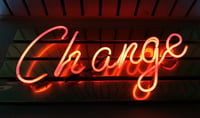
Embracing The “Messiness” Of Buying And Selling
As human beings and business professionals we crave structure and order in everything we do. We build carefully architected sales processes. Our customers draft detailed project plans, guiding them on their journey.
Our models/frameworks, whether buying or selling, are clean, linear, structured, logical and rational. And we develop metrics aligned with these models. We think systems and processes. We diagram, flowchart, checklist and script. We apply labels like Bow-Tie, SPICED, MEDDPICC, Jobs To Be Done. We package it into neat little boxes, each with it’s own set of metrics, all striving to be perfectly predictable.
And nothing goes to plan. (I won’t repeat Mike Tyson’s famous quote, you have it memorized).
No matter how much structure we impose, disorder always emerges. Plans and priorities shift, people come and go, new things divert our attention, needs change.
Rather than push through the mess, pause to deal with it.
And as much as we try to put things back into their neat boxes and compartments, disorder always emerges. Those of you with science backgrounds will recognize this concept as entropy. In science we recognize this natural drift in every system, the drift from order to disorder. And in science we don’t recognize this as a failure, but rather as a feature of reality.
In our business worlds, we try to pretend this disorder and messiness doesn’t exist. We ignore messiness, responding with the next step in our playbooks. Regardless how much we ignore this, the messiness is always there.
How do we start recognizing the mess?
I actually think this is the easy part, we see it all the time, we just ignore it. Things don’t go as planned, people respond in ways we didn’t expect, things we didn’t plan on pop up, there are emotional undercurrents–ours and those we deal with–that impact our ability to move forward, or even derail us. It’s never constant, it is dynamic and shifting.
What do we do in dealing with the mess? First, we recognize the fact that it’s happening. And the fact that it’s happening may be a very positive sign of engagement. Engagement not the way we had planned but engagement.
Then rather than pushing through the mess, pausing to deal with it. What’s happening, why is it happening, what do we need to do to move past it? These aren’t answers we develop by ourselves, these are things we develop collaboratively with the people going through the mess with us–our customers, our colleagues.
How do we recognize and surface tensions? How do we create a shared language and shared goals? How do we recognize the underlying emotions, concerns, uncertainty? How do we collaboratively learn, adjust and move forward?
Cultivating our skills in curiosity, critical thinking, having collaborative conversations, and our ability to co-create with others. Improving our tolerance for ambiguity and understanding differing points of view.
Our goal is not to eliminate the mess, but how we acknowledge it, embrace it, and still persevere in achieving our goals.
Structure helps, process matters, discipline is critical. But messiness is where the real work happens. Embracing the messiness is where problems are really solved.
Let’s get messy!
Afterword: Here is the AI based discussion of this post. It’s a concise, but really imaginative discussion. Enjoy!

By Dave Brock
Dave has spent his career developing high performance organizations. He worked in sales, marketing, and executive management capacities with IBM, Tektronix and Keithley Instruments. His consulting clients include companies in the semiconductor, aerospace, electronics, consumer products, computer, telecommunications, retailing, internet, software, professional and financial services industries.
Find out more about Dave Brock on LinkedIn







